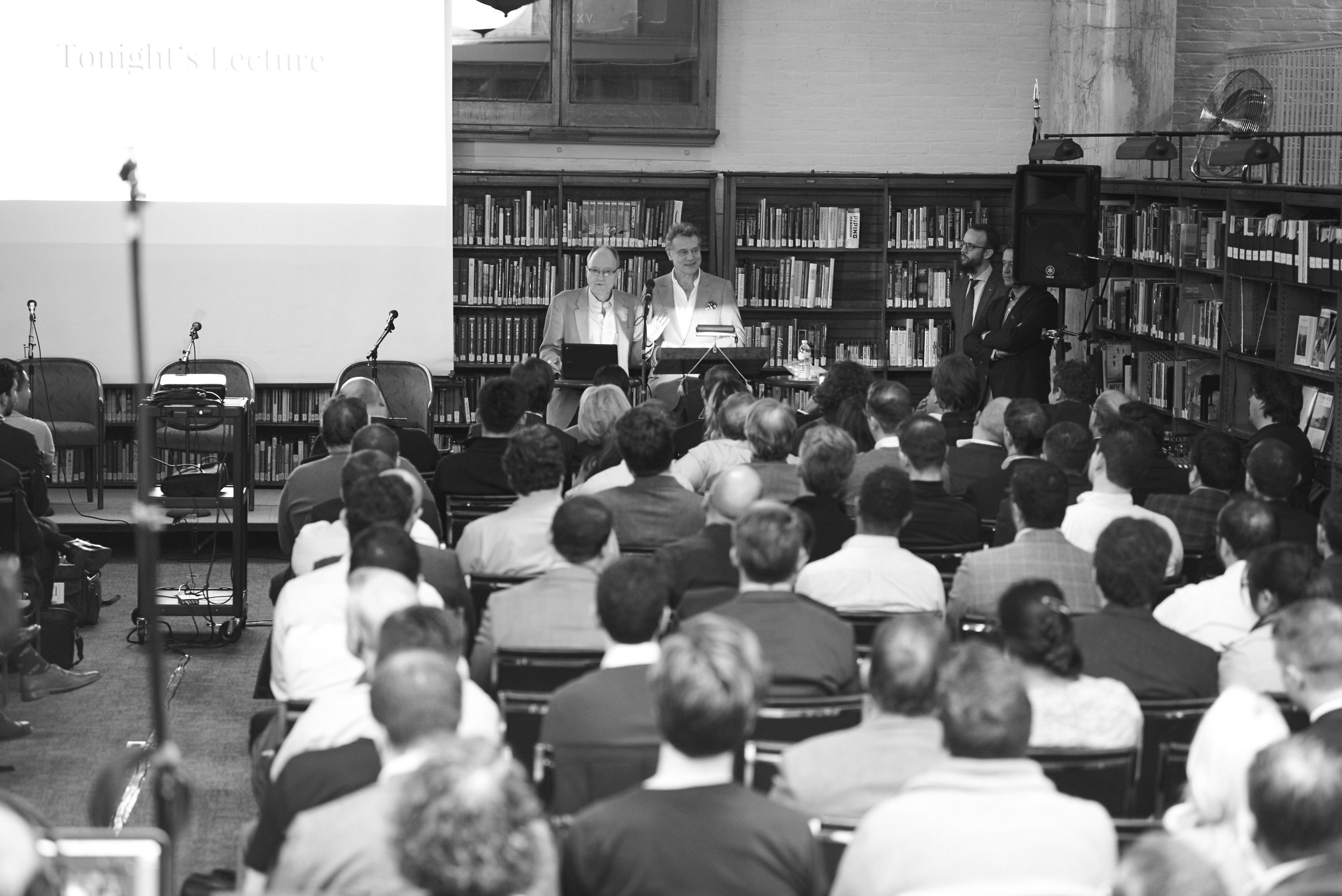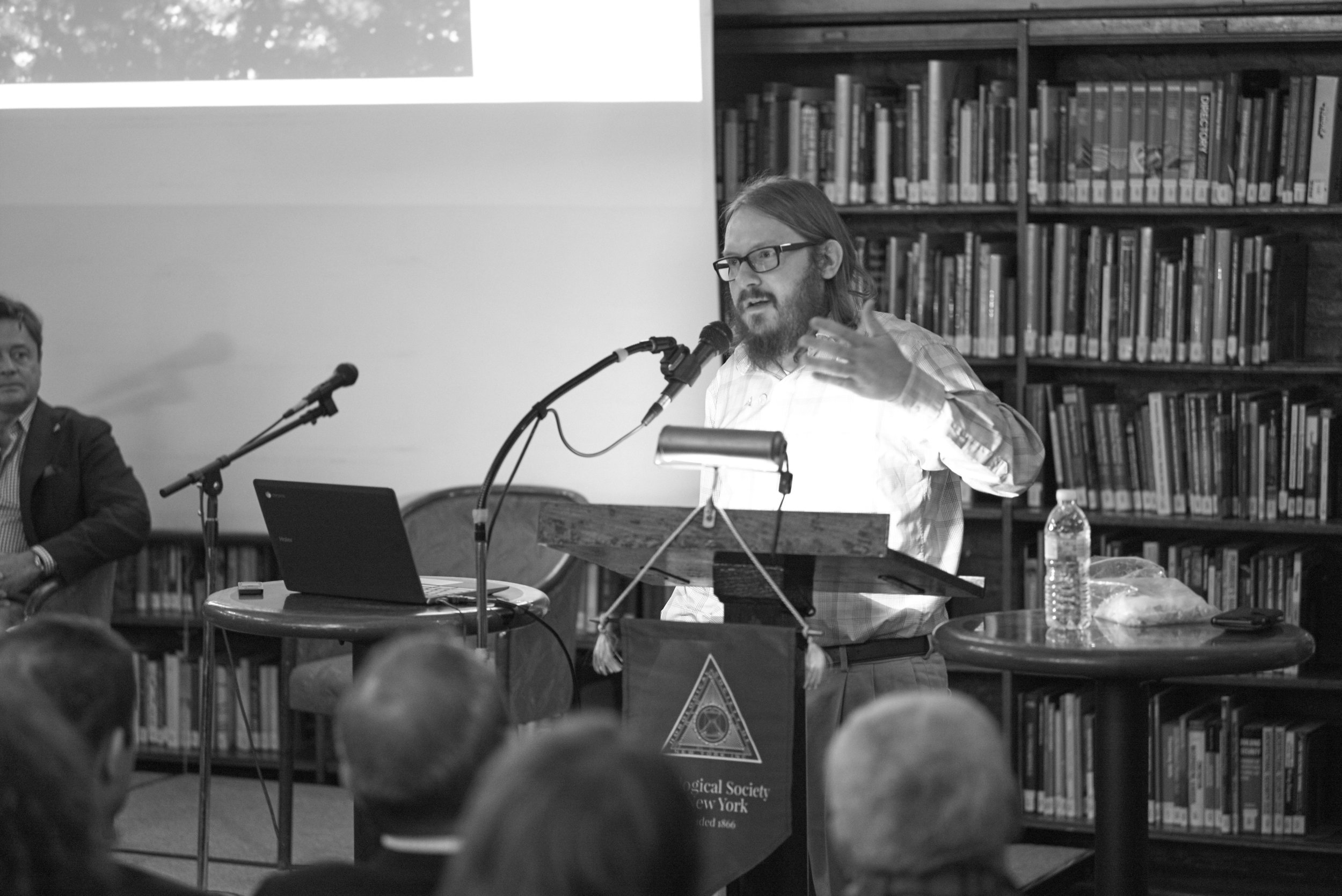
The Horologist’s Loupe
The Horological Society of New York's newsletter (and today blog!) began publishing in 1936, and is one of the oldest continuously running horological publications in the world.
Meeting Recap: Time is Money - How to Make a Living in the World of Watches
John Reardon - International Head of Watches, Christie's
February 6, 2017
Video recordings of meetings are available to HSNY members.
It seemed like the entire membership was present at the February 6th meeting of the HSNY. Extra chairs were set up in the General Society Library to accommodate the large audience. The speaker of the evening, Mr. John Reardon, discussed various people connected with the watchmaking industry, including their beginning and what motivates them today. Names mentioned were Andrew Walden, Rudy Albers, Nicholas Manousos, Benjamin Clymer, Michael Friedman, Katie Reed, Atom Moore, among many others. Their success stories are inspirational to anyone hoping to participate in the world of watches today.
Mr. Reardon asked his interviewees how they got started in their respective fields and what advice they would give to others. The overwhelming answer was dedication to their jobs, enjoying what they do with a passion and sharing their knowledge and enthusiasm with others. They comprise a select group who keep the wheels turning in the watchmaking business.
Our thanks to Mr. Reardon for this extraordinary presentation.
Submitted by Walter Pangretitsch, Recording Secretary, HSNY
























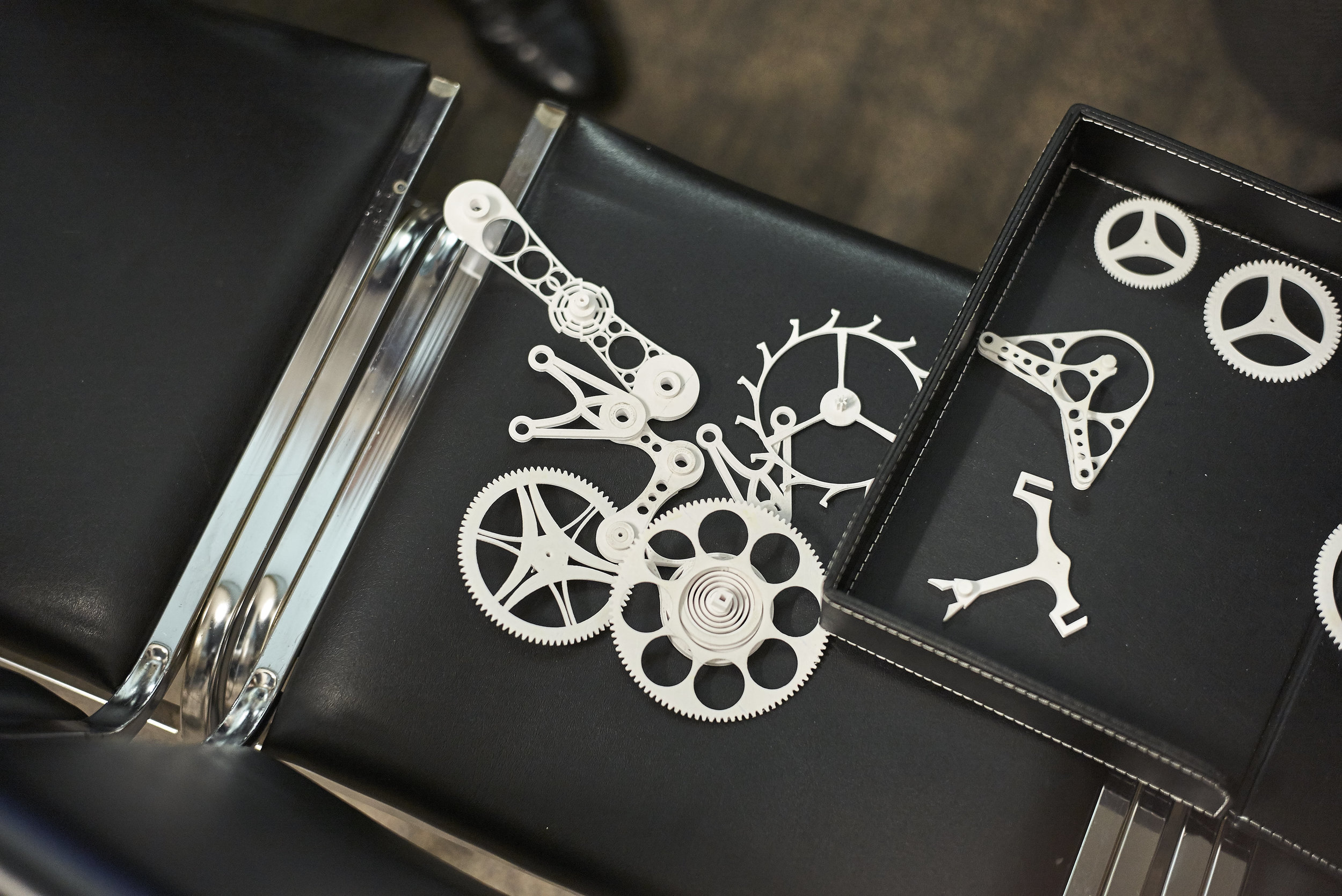














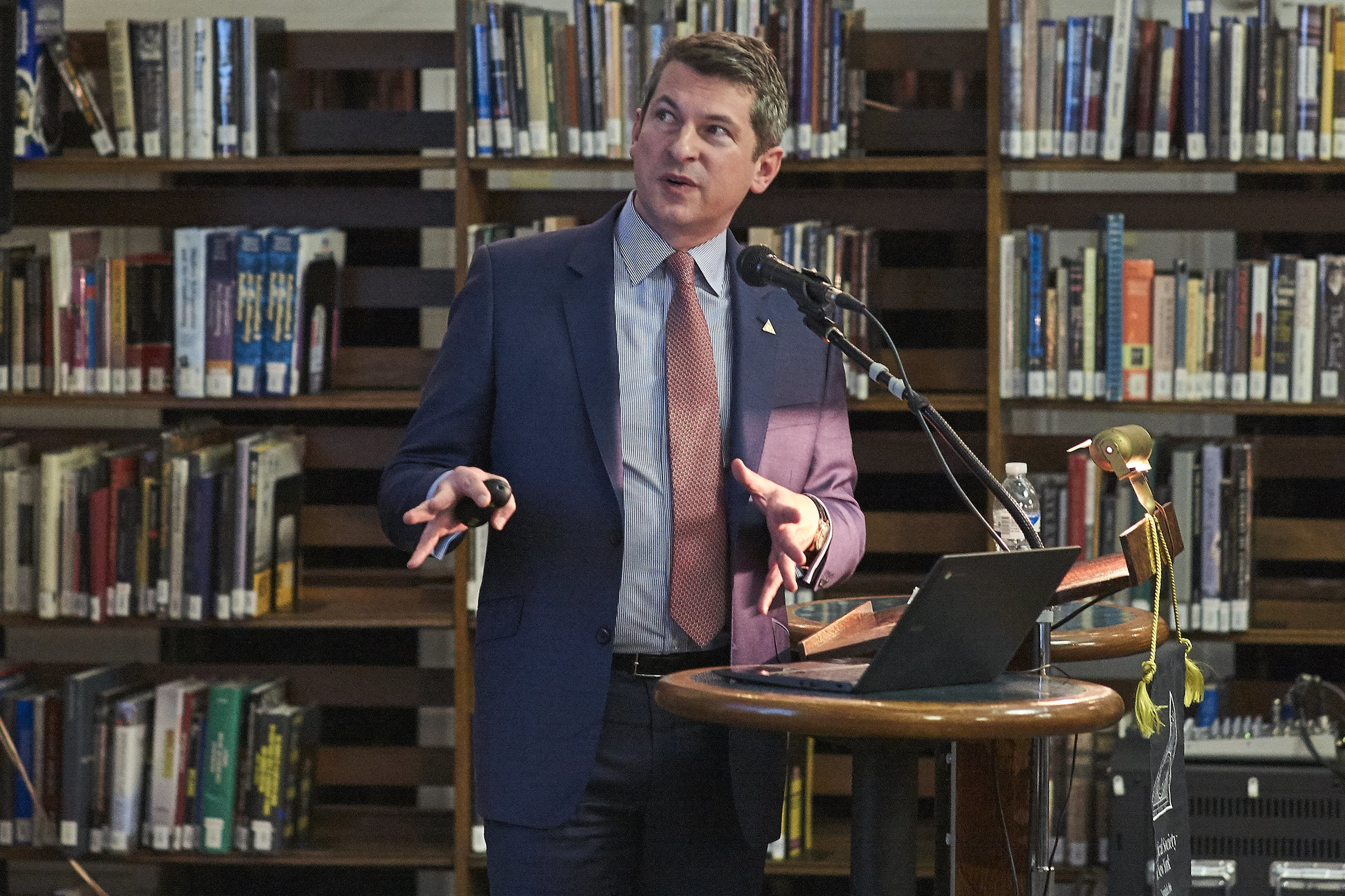


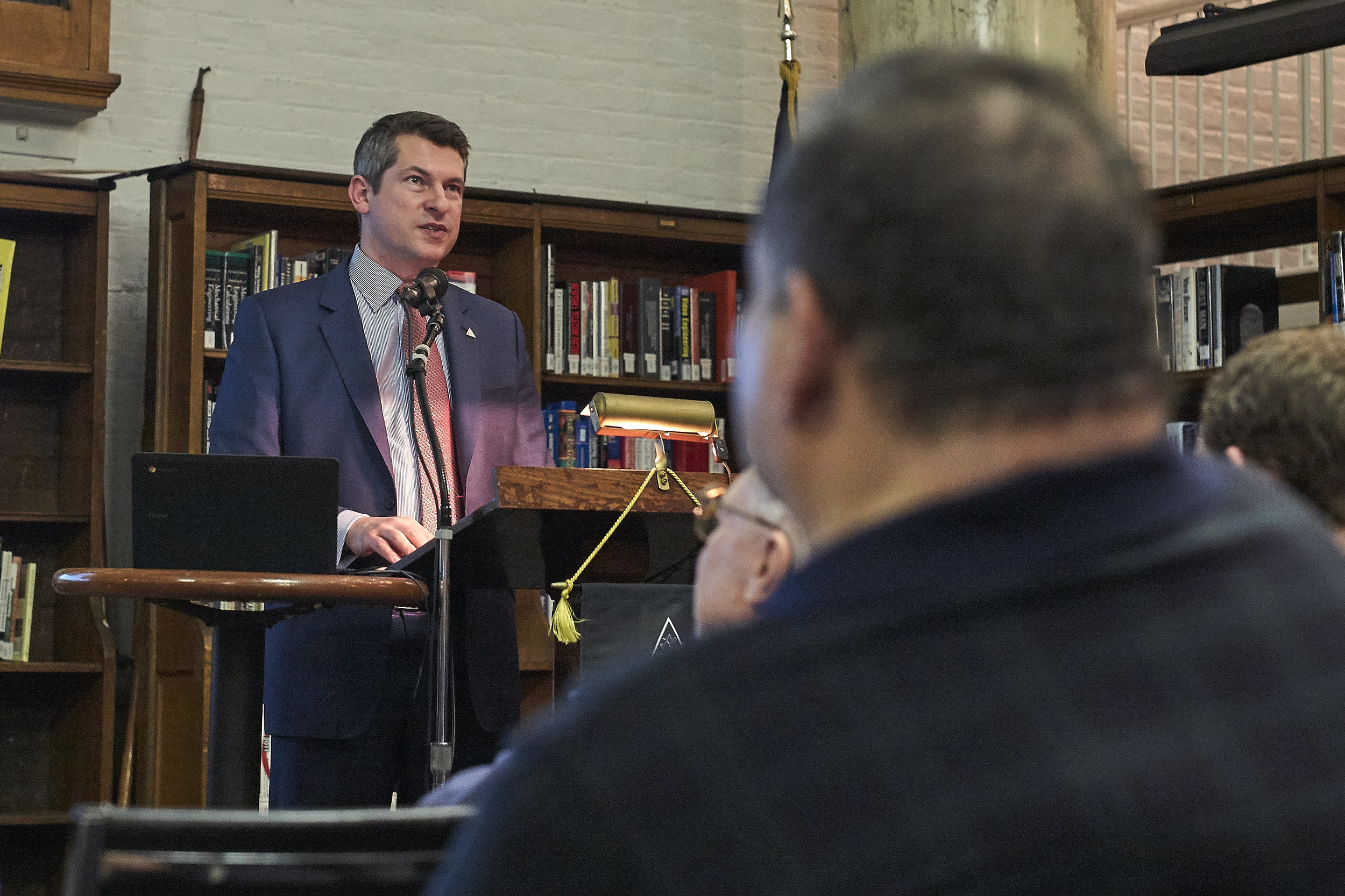















Meeting Recap: Horology in Art
Bob Frishman - Founder and Owner of Bell-Time Clocks
January 10, 2017
Video recordings of meetings are available to HSNY members.
At the January meeting of the Horological Society of New York, Bob Frishman, founder and owner of Bell-Time Clocks, delivered a captivating lecture on Horology in Art. Frishman discussed the symbolism of timepieces included in famous artwork, from classical to modern. In one example, Frishman showed the 1812 portrait of Napoleon by Jacques-Louis David, which features a clock showing the time of 4:00 AM. The early morning hour was depicted to show that Napoleon was working hard at all hours of the day. In another example, Frishman showed the 1653 Velazquez portrait of Infanta Maria Theresa to explain how timepieces were included to show the wealth or sophistication of the subject.
Frishman concluded his lecture by inviting the audience to the Horology in Art symposium that he is organizing for the National Association of Watch & Clock Collectors in October at the Boston Museum of Fine Arts. HSNY thanks Bob Frishman for his entertaining and educational lecture.
2017 Executive Committee
HSNY's Board of Directors met recently to hold elections for 2017. After serving eight years as President, Ed Hydeman resigned and nominated Nicholas Manousos as his successor. HSNY thanks Ed for his exemplary service. (Above, Ed Hydeman and Nicholas Manousos at the 150th Anniversary Gala, March 2016.)
- Ed Hydeman, who previously served as President, was elected Trustee, ex officio, and named a Fellow of the Society.
- Nicholas Manousos, who previously served as Vice President, was elected President.
- Michael Fossner, who previously served as Trustee, was elected Vice President.
- Luke Cox-Bien, who previously served as Trustee, was elected Director of Horological Studies.
- Michael Friedman and William Massena were elected Trustees.
Meeting Recap: Intertwining Roots - Watchmaking, Artisanship & Technology
Michael Friedman - Historian for Audemars Piguet
December 12, 2016
Video recordings of meetings are available to HSNY members.
At the December meeting of the Horological Society of New York, Michael Friedman, noted historian from Audemars Piguet, spoke about the origin, development and significance of watches through the ages. Friedman discussed the inventions by Huygens, Harrison, Breguet and others, which were fundamental to future developments in the field of horology. He pointed out that these fascinating objects of time were also considered works of art and highly prized by their wealthy owners who are often depicted in early portraits wearing them.
Friedman explained how the wristwatch became popular in the early 20th century, ultimately dominating the market after WWI. In the last quarter of the 20th century, the mechanical watch was threatened by electronic technology, but survived and now thrives. Today the most complicated watches, created with the help of modern technology, combine mechanical precision (based on traditional principles) with designs that rival early masterpieces. They integrate science and art. It seems that man's fascination with time and timepieces is timeless!
Our thanks to Mr. Friedman for this informative presentation.
Submitted by Walter Pangretitsch, Recording Secretary, HSNY
HSNY & AWCI Reciprocal Membership Benefits
The American Watchmakers-Clockmakers Institute (AWCI) is the national organization for watchmakers and clockmakers, of which HSNY is an affiliate chapter. HSNY & AWCI are pleased to announce reciprocal membership benefits, available now. HSNY members have digital access to the AWCI's excellent monthly magazine, Horological Times, and AWCI members have access to video recordings of HSNY's monthly lecture series. Enjoy!
Meeting Recap: Theories of Time
Dr. Demetrios Matsakis - Chief Scientist for Time Services, U.S. Naval Observatory
November 14, 2016
Video recordings of meetings are available to HSNY members.
At the November meeting of the Horological Society of New York, Dr. Demetrios Matsakis, Chief Scientist for Time Services at the U.S. Naval Observatory, lectured on the nature of time. Dr. Matsakis began with Isaac Newton's laws of motion and gravity and progressed through history to Albert Einstein's theory of relativity. The topic of causality was introduced, along with discussion on the concept of worm holes that we often see depicted in movies.
The thought-provoking lecture inspired a lively Q&A session after the lecture. While the majority of lectures at HSNY focus on mechanical timepieces, Dr. Matsakis' lecture was a refreshing change of pace that was extremely appreciated. HSNY thanks Dr. Matsakis for his illuminating and inspiring lecture.
Meeting Recap: The History of the Calendar
Hosted by François-Paul Journe, Founder, Montres F.P. Journe, Switzerland
October 24, 2016
The October 24, 2016, meeting of the Horological Society of New York had one of the largest turnouts in recent years. Members and guests came from across the country to hear François-Paul Journe, Jack Forster, Pierre Halimi Lacharlotte and Keith Lehman discuss the development of calendars and their importance in human societies from early times to the present. The first watches showing the date were made more than two centuries ago, today they have evolved into ultra-complicated timepieces.
We learned that calendars made by the Aztecs and the Babylonians have some similarity, as they are based on the number 360. This is significant because we measure time by the yearly cycle of the Earth around the sun, which is approximately the same. Calendars were important in early societies to keep track of planting seasons and religious events. Furthermore, five extra days were not counted in some primitive methods of calculating the year, similarly to leap days added in modern times.
We now realize that telling the right time involves more than just hours and minutes, we have to also consider the complication of day and date. Thanks to all the speakers for enlightening us on this topic. Special thanks to Mr. Journe and the National Watch & Clock Museum for displaying their calendar pocket watches which are rarely seen.
Submitted by Walter Pangretitsch, Recording Secretary
Photos by Atom Moore
Video recordings of meetings are available to HSNY members.
HSNY Begins Video Recording its 150-Year-Old Lecture Series
Since 1866, the Horological Society of New York's (HSNY) monthly meetings have featured watchmakers, clockmakers, historians and scientists all lecturing on horological topics of interest. In recent years, HSNY featured guests such as Roger Smith, François-Paul Journe, Kari Voutilainen, Rory McEvoy (Curator of Horology at the Royal Observatory, Greenwich, UK), and HODINKEE's Benjamin Clymer. Traditionally these meetings have never been recorded, you had to be there in person. Today that changes; HSNY is bringing its world-class lecture series to the world.
HSNY's first video recorded meeting, The History of the Calendar, hosted by François-Paul Journe, is now online. Video recordings are available as a benefit to HSNY members. The video below is a preview clip.
Event Recap: HSNY's Traveling Education Classes Visit San Francisco
October 29 & 30, 2016
Over the last October weekend of 2016, HSNY's Traveling Education classes visited San Francisco for two full days of watchmaking workshops. The sold-out classes were full of enthusiastic students, eager to learn what makes a mechanical watch tick. The classes were taught by Vincent Robert, HSNY's Director of Traveling Education, along with HSNY instructor Briana Le. The next stop for the Traveling Education classes is next weekend in Los Angeles, hosted by the F.P. Journe boutique on Sunset Boulevard.
Meeting Recap: The History of Chronographs, From the Beginning Until 1980
Dr. Sébastien Chaulmontet – Head of Movement Design for Manufacture La Joux-Perret, Arnold & Son and Angelus Watches, Switzerland
September 12, 2016
HSNY's first Fall meeting of 2016 was held on September 12th at the General Society Library on 44th Street. A large audience was present to hear Dr. Sébastien Chaulmontet discuss the development of the chronograph watch from the 19th century to the present. Showing many slides of various models produced over the last 150 years, he emphasized that the chronograph was not a single invention, but the result of collaboration. It was the next step in the evolution of complicated watches made previously, such as repeaters and stop watches.
The early chronographs were pocket watches, mostly in gold cases. Many were made by the Swiss who dominate the market to this day. However in the late 19th century several American companies made their own versions using mass production. Pilots found them indispensible as did other professionals, particularly when wrist watches became popular around 1930. Swiss manufacturers such as Valjoux, Landron and Venus made movements used in famous brands from all over the world. Longines, Movado and some other high end makers made their own calibers, some with special features. Movado introduced modular assembly, which is now standard for most chronographs. Breitling and Heuer added self-winding mechanisms and other technical improvements.
These specialized watches, although produced in large quantities, are not as easy to find as regular watches; they are eagerly sought by watch collectors. Mr. Chaulmontet cautioned that buyers should look for consistency in the condition of the movement, the dial and the case. We thank him for this informative presentation.
Submitted by Walter Pangretitsch, Recording Secretary
Photos by Atom Moore
Event Recap: A Celebration of Audemars Piguet's Redesigned NYC Boutique
September 21, 2016
Last week our friends at Audemars Piguet invited the Horological Society of New York to their beautifully redesigned boutique at 65 East 57th Street. The space, redesigned by Swiss firm Atelier Oi in collaboration with interior design firm Spin Design, is both welcoming and luxurious. Michael Friedman, Audemars Piguet's famed historian, welcomed the HSNY community. Additionally Friedman handpicked a variety of vintage watches originally made for the New York market which can be found on display towards the back of the boutique; a must see for all horological enthusiasts. Our thanks to Audemars Piguet for a wonderful night!
Photo by Atom Moore
Event Recap: HSNY's Traveling Education in Miami, Florida
September 17-18, 2016
HSNY's Traveling Education program recently began its tour of the USA with a weekend of Horological Education in Miami, Florida. The classes were hosted by HSNY sponsor F.P. Journe in their wonderful Design District offices, with students traveling from across Florida to take part. Miami was just the start. Do you have a suggestion for where HSNY's Traveling Education should go next? Please let us know.
Photos by Judd Wood
Meeting Recap - A Story of Old Horology in London
Seth Kennedy – Antiquarian Horologist, London. Photo by Atom Moore.
July 5, 2016
At the July meeting of the Horological Society of New York, Mr. Seth Kennedy, noted horologist from London, gave a talk on the history of the watch industry in England. Kennedy displayed several antique watches which he meticulously restored and showed many slides of the Clerkenwell streets where the industry began in the 17th century.
At one time there were thousands of clock and watchmakers in the area, producing timepieces for the world market. Noted for their excellence, they have always been in great demand. However, because American factories began mass producing watches in the 19th century using interchangeable parts, English watches (which were mostly hand made) could no longer compete. Consequently, fewer tradesmen were needed in the industry. Mr. Kennedy explained that fixing these old watches often requires making parts, utilizing the same skills as the original watchmakers. Sometimes it takes weeks to finish a repair! No doubt, not everyone can do it, but he has shown us the procedure.
We admire his accomplishments and thank him for this lecture.
Submitted by Walter Pangretitsch, Recording Secretary, HSNY
HSNY Welcomes Audemars Piguet as a Sponsor
New York City - June 16, 2016
Furthering the Horological Society of New York’s (HSNY) educational mission, Swiss watch manufacture Audemars Piguet has joined as a sponsor. Audemars Piguet’s generous support will enhance HSNY’s 150-year-old monthly lecture series, evening horological education classes, and extensive horological library.
Michael Friedman, Historian for Audemars Piguet said “Audemars Piguet is honored to support the Horological Society of New York - an organization dedicated to the continued sharing of horological knowledge from both the technical and historical perspectives while remaining on the pulse of the contemporary watchmaking industry.”
Nicholas Manousos, HSNY Vice President said “Audemars Piguet’s commitment to education is inspiring on many levels. The famous Swiss watch manufacture is well known both for their mastery of traditional watchmaking techniques, and innovative new technologies. HSNY thanks Audemars Piguet for their kind support.“
Michael Friedman, Historian for Audemars Piguet, toasting to HSNY's 150th anniversary
Meeting Recap - Investing in Watchmaking for the 21st Century
William Massena - Managing Director of Timezone.com
May 2, 2016
The lecture at the May 2nd meeting of the HSNY was given by William Massena, Managing Director of Timezone.com.
Showing several examples of watches which have appreciated in value as well those that have declined over time in his statistical study, Mr. Massena concluded that investing in watches is more profitable than stocks or banks. However, he advised buyers to study the market carefully, particularly auction prices, where comparisons of similar models can be made. In recent years there has been a greater volume of watch sales with more auction houses specializing in this field.
Although important timepieces usually go up in value, some types are over produced and manufacturers tend to mislead collectors, by claiming they are limited editions. This is one of the several "buyer beware" points mentioned. Also designer names can influence value, as well as condition, which is subjective. Seeing the actual watch is better than a picture in a sales catalogue. The best advise is to buy what you like and to enjoy collecting!
There is much interest in this topic, judging by the many questions asked. We thank Mr. Massena for extending his talk and patiently answering all of them. We learned something about an aspect of horology with which most of us were not familiar.
Submitted by Walter Pangretitsch, Recording Secretary, HSNY
Analog/Shift Auction Raises $10,000 for HSNY!
Analog/Shift's auction of a Wittnauer Electro-Chron with Major League Baseball provenance finished last Friday evening with a hammer price of $10,000, all of which will be donated to HSNY! This very special wristwatch was auctioned in partnership with former NYC Mayor Giuliani, on the occasion of Analog/Shift's fourth anniversary. HSNY thanks Analog/Shift and Mayor Giuliani for their generous support of our educational mission.
HSNY Welcomes Analog/Shift as a Sponsor
On the occasion of Analog/Shift's fourth anniversary, the Horological Society of New York welcomes the famous NYC-based watch retailer as an official sponsor. In addition, AnalogShift is auctioning a very special Wittnauer Electro-Chron wristwatch in partnership with former New York City Mayor Rudolph Giuliani. All proceeds from this auction will benefit the Horological Society of New York.
This Wittnauer Electro-Chron has a fascinating historical connection to Major League Baseball. In the early 1960s, Wittnauer Electro-Chrons were presented to former Major Leaguers by the Cleveland Indians and the New York Yankees. This particular Electro-Chron belonged to none other than famed (or infamous) shortstop “Rowdy” Richard Bartell.
Dick Bartell’s career in the Major League Baseball began in 1927. In the nearly twenty years Bartell was in the Major Leagues, he played for the Pittsburgh Pirates, Philadelphia Phillies, New York Giants, Chicago Cubs, and Detroit Tigers. This watch was presented to Bartell by the owners of the New York Yankees at Old-Timers’ Day at Yankee Stadium, July 28, 1962.
The auction runs until Friday, May 20, 2016. Head over to Analog/Shift now to place your bid for a piece of NYC horological history!
Vintage Copies of The Horologist's Loupe Now Available
In 1939 the Horological Society of New York started publishing its monthly newsletter, The Horologist's Loupe. HSNY's friends at the National Watch and Clock Museum recently found two books in their archives containing vintage copies of The Horologist's Loupe from the 1940s, 1950s, 1970s and 1980s. With their kind permission, those vintage copies were scanned and are now available for all to read.
The first editor of The Horologist's Loupe was Henry Fried, who later became President of HSNY. Fried was a prolific horological author and illustrator who wrote many books that are still referenced today by working watchmakers. The New York Times called him "The Dean of American Watchmaking." The Horologist's Loupe contained many of Fried's original illustrations and texts, giving a look at his work before it was adapted into his famous books.
Take a look at the caption for the lower photograph: "Part of the crowd of over 500 watchmakers and guests at the April [1950] meeting." Wow!
These vintage copies of The Horologist's Loupe also provide a glimpse into HSNY post-war happenings. Meetings were regularly attended by over 300 members, and regular gala dinners were a highlight of the year. We hope you enjoy this look into HSNY's history, and we thank the National Watch & Clock Museum for preserving these pieces of HSNY's past!
HSNY Welcomes F.P. Journe as a Sponsor
François-Paul Journe - Founder, F.P. Journe & Nicholas Manousos - Vice President, Horological Society of New York, Meet at the General Society Library in Midtown Manhattan
Furthering HSNY's educational mission, Swiss watch manufacture F.P. Journe has made a major contribution to facilitate an expansion and relocation of HSNY's extensive horological library. Beginning in May 2016, HSNY's library will move into the NYC landmark General Society Library, where HSNY holds its 150-year-old monthly lecture series.
F.P. Journe also donated and signed two books published by the brand, Steel Time by Jean-Claude Sabrier and Georges Rigot, and Grand Sonnerie, by Jean-Claude Sabrier and Vincent Daveau. Both books are available now in HSNY's library for all members.
François-Paul Journe's First Wristwatch
Nicholas Manousos, HSNY Vice President said "HSNY's library is a horological treasure, and F.P. Journe's sponsorship is an incredible gesture that will help keep the library available and accessible for generations to come."
Pierre Halimi Lacharlotte, Montres Journe America General Manager said "To all lovers of watchmaking, to all would be watchmakers: 'Study the past if you would define the future.' (Confucius)"
Movement of the F.P. Journe T10 Tourbillon Wristwatch
Meeting Recap - John Harrison: Longitude, the Precision Watch and Pendulum Clock
John Harrison's H1 Marine Chronometer
Rory McEvoy - Curator of Horology at the Royal Observatory, Greenwich, UK
April 4, 2016
The guest speaker at the April 4th meeting of the HSNY was Rory McEvoy from the Royal Observatory in Greenwich, England. Held at our new meeting place, the General Society library, a large audience heard him discuss the contributions to horology by the famous scientist and inventor, John Harrison. Many clocks made by Harrison are at the museum, which displays the H4 chronometer, the first accurate timepiece made to calculate longitude at sea. Mr. McEvoy related some interesting details about how Harrison produced this smaller chronometer.
At an early age Harrison was a bell ringer; he observed the rhythmic swinging of bells giving him the idea to utilize the horizontal pendulum in his first attempt to win the prize for longitude. Two more version over many years were not successful. Utilizing a mainspring and not depending on gravity was the solution; a highly precise type of pocket watch, which could be handled more easily at sea, instead of a cumbersome clock, was the answer. Harrison formulated special alloys and sought the advise of famous watchmakers to achieve a final accuracy of one half degree, adequate for navigation. In fact some "copies" of H4 were ordered by the British Admiralty and made by Kendall or Jeffries. History records that one was used on the famous ship "Bounty."
Our thanks to Mr. McEvoy for this informative presentation. The story of John Harrison is fascinating and inspiring.
Submitted by Walter Pangretitsch, Recording Secretary, HSNY














